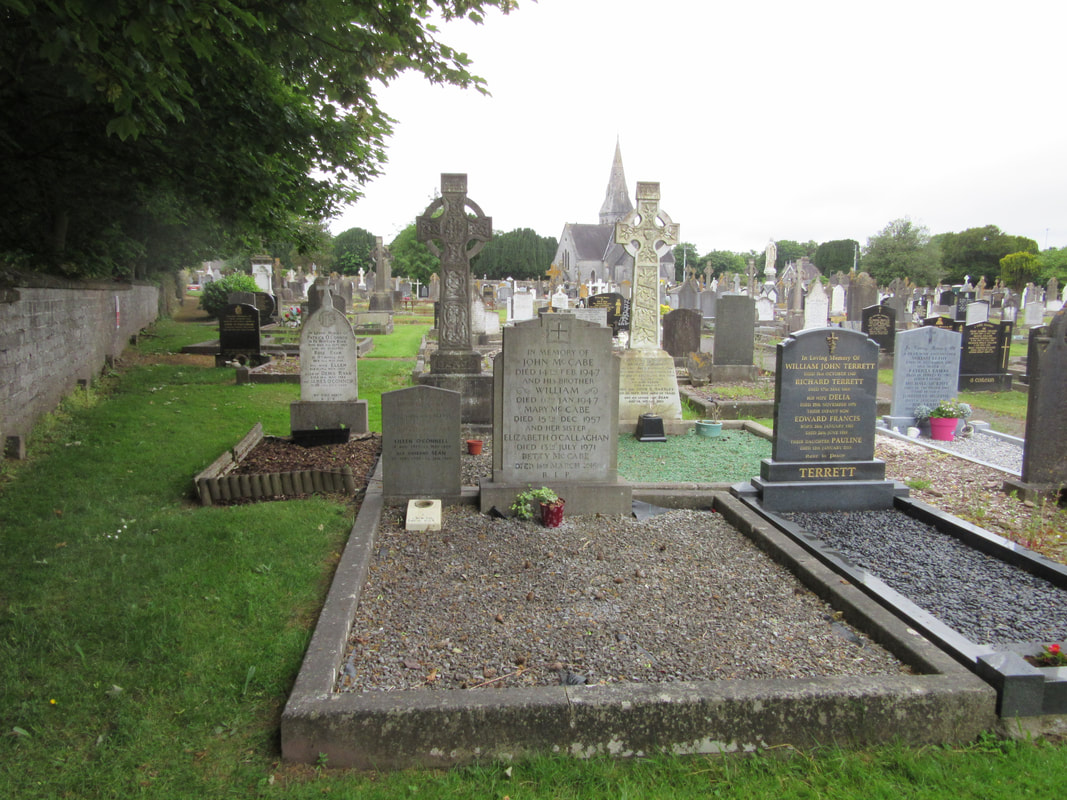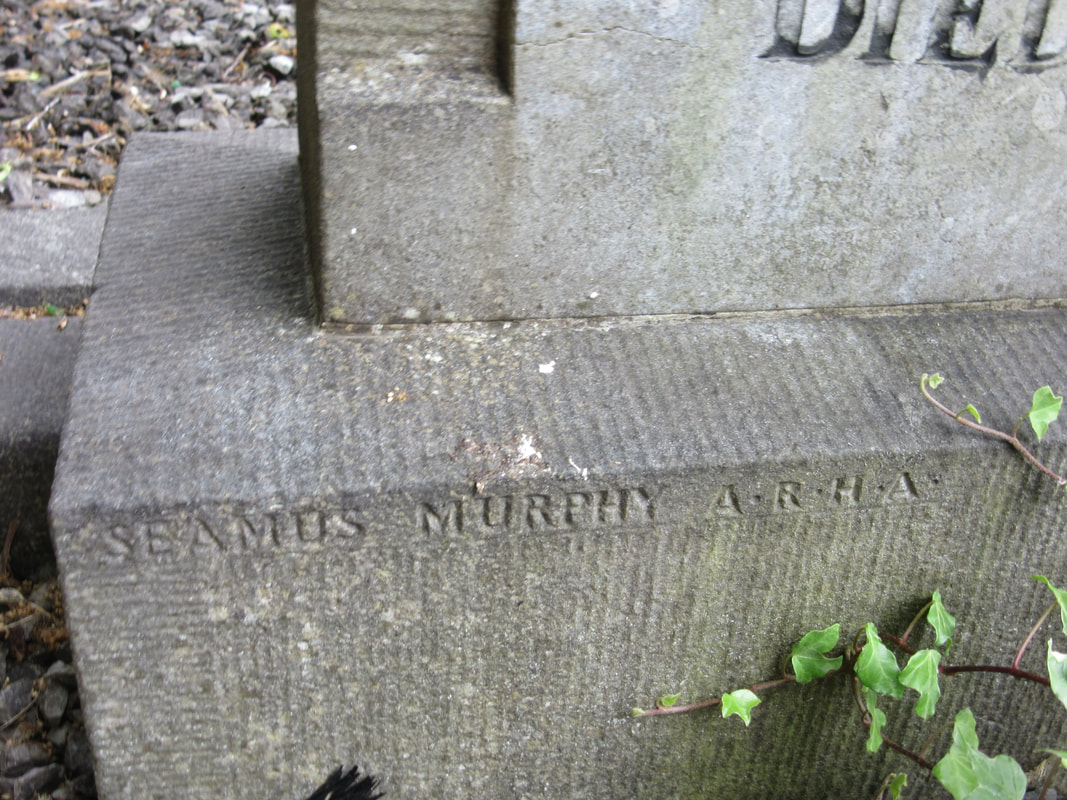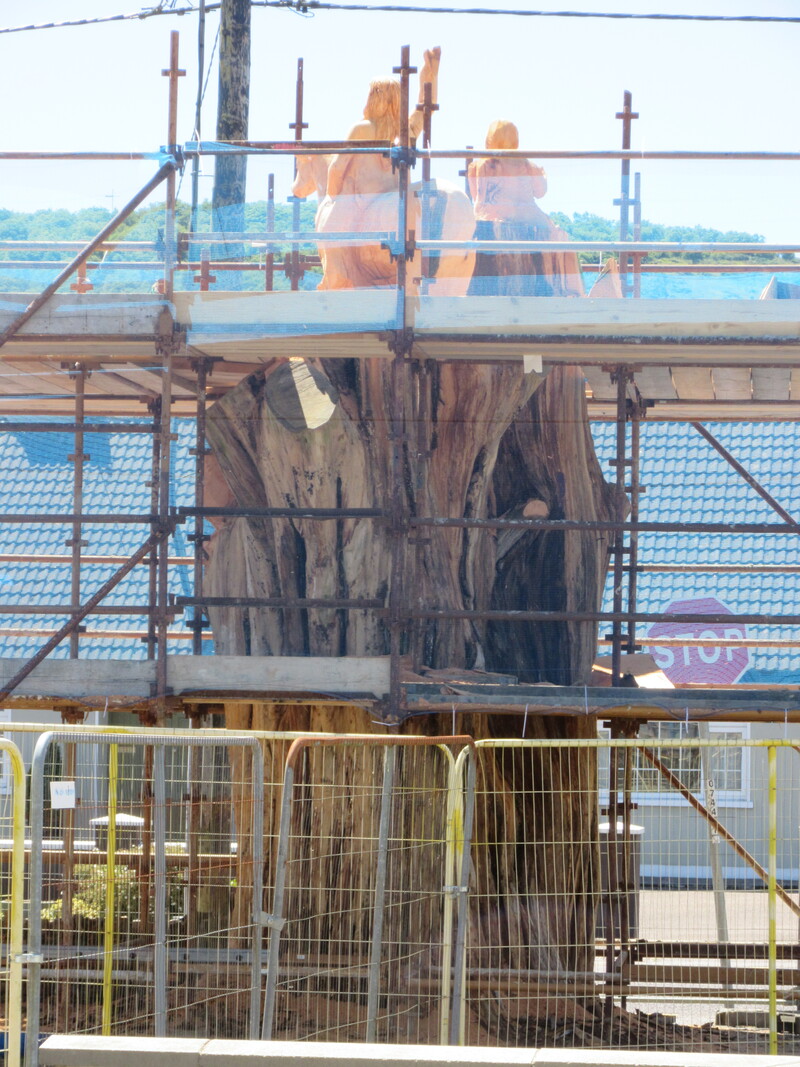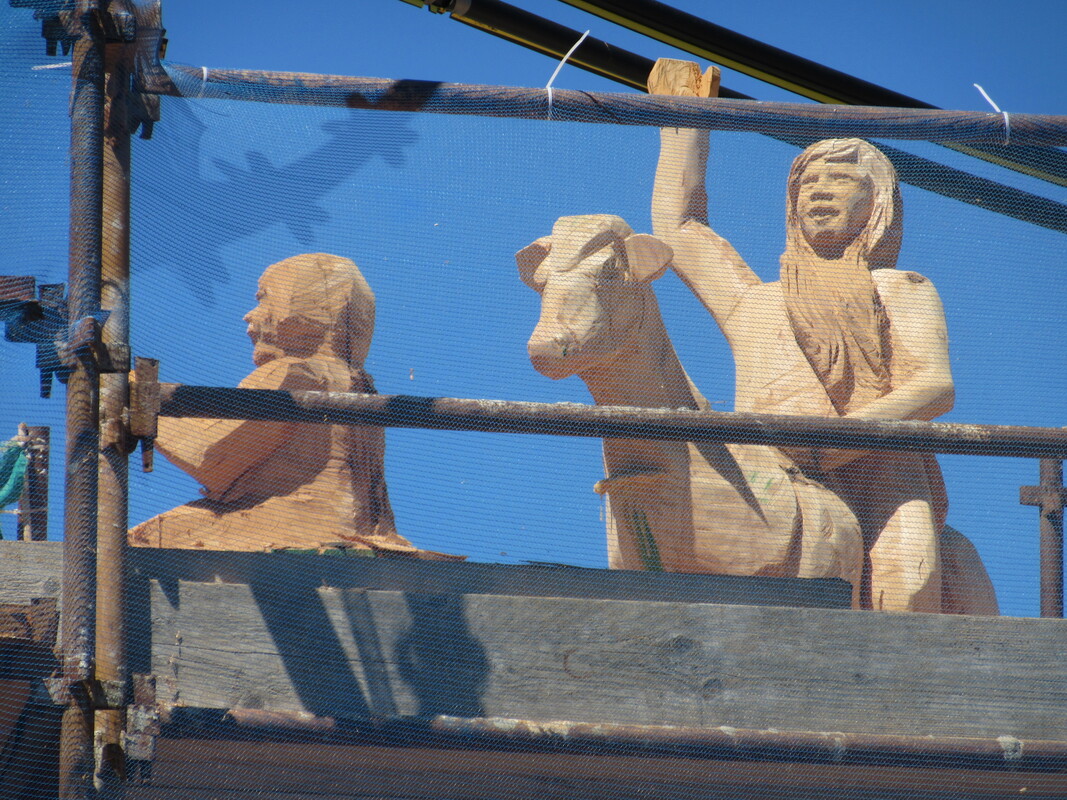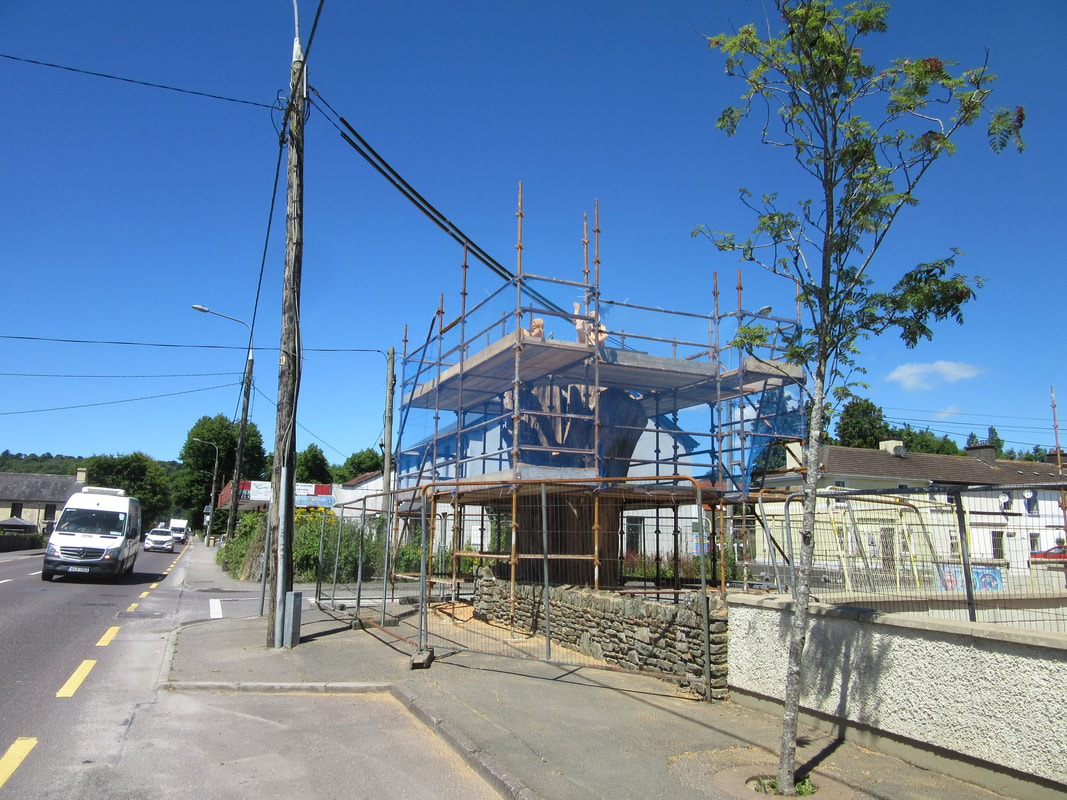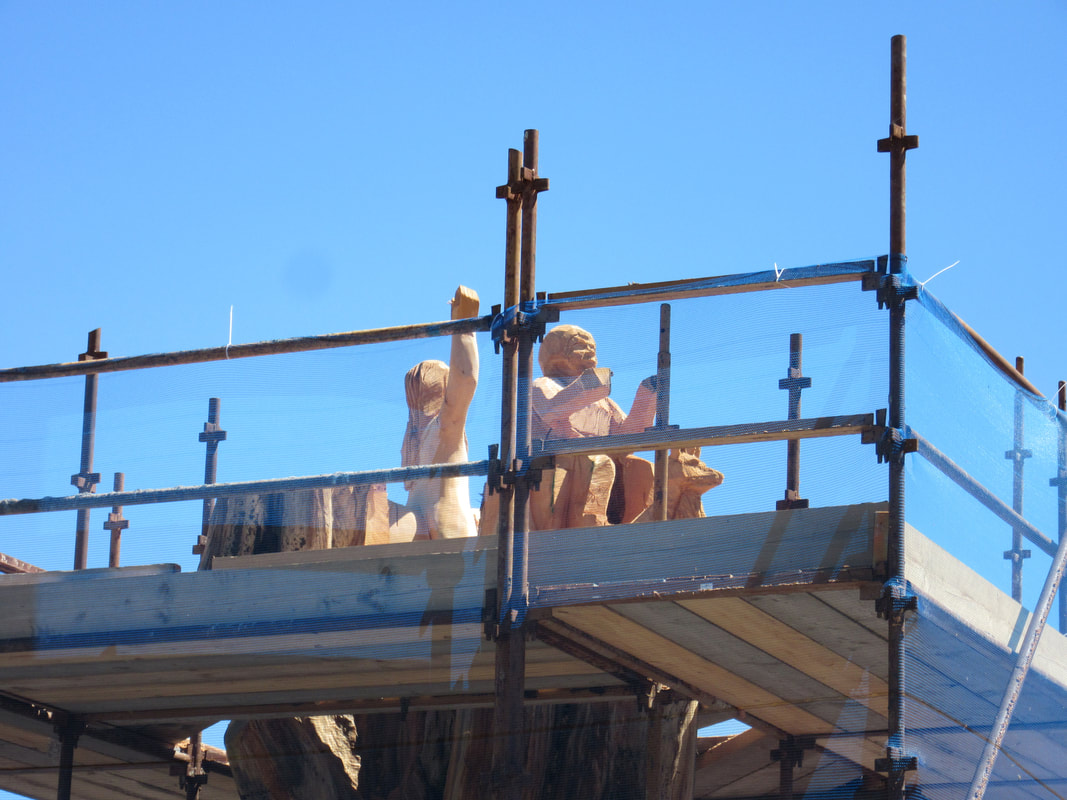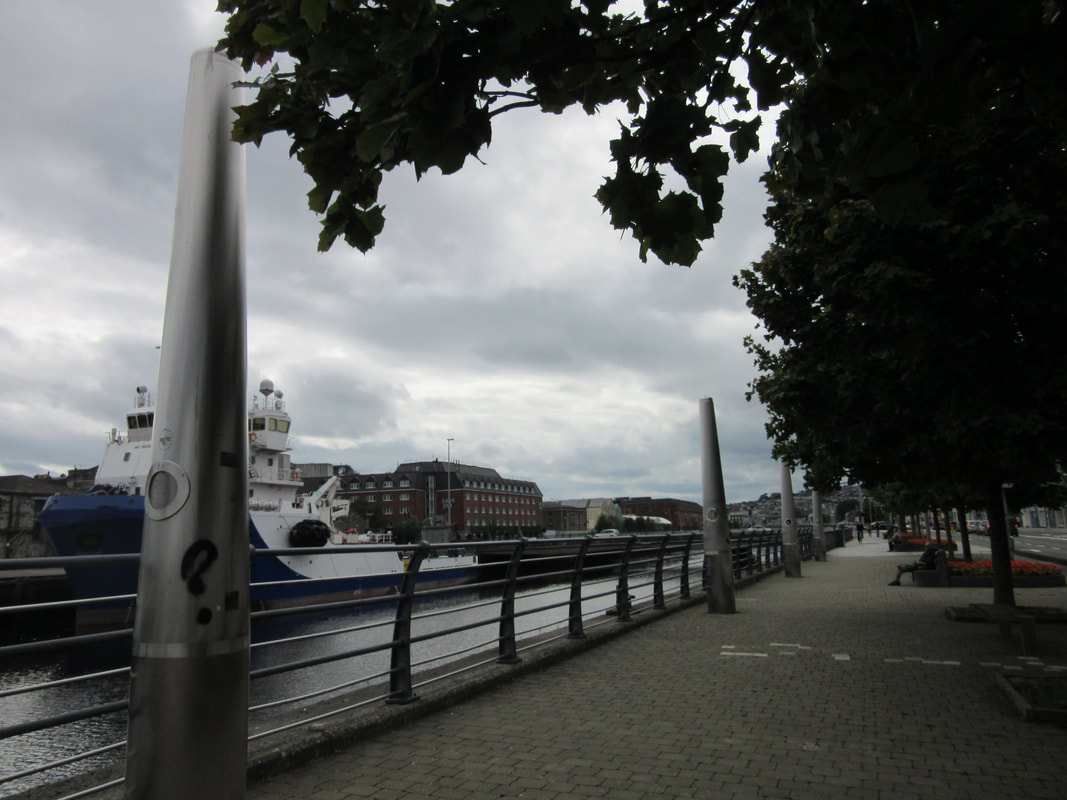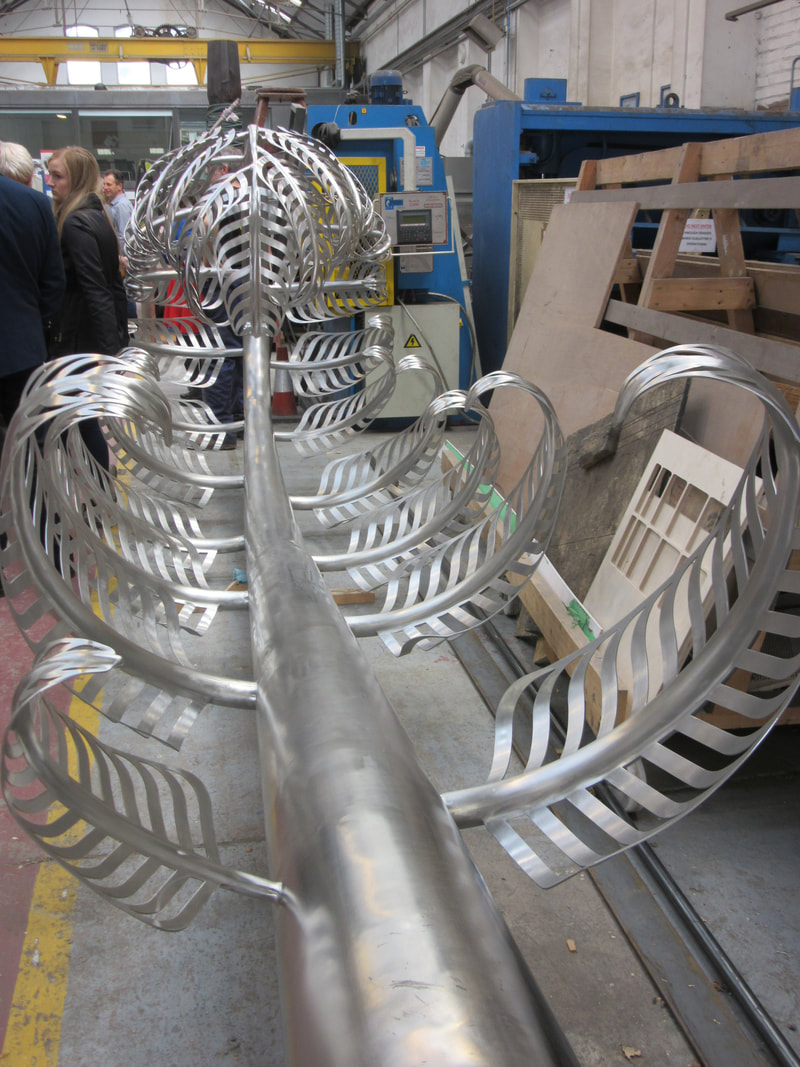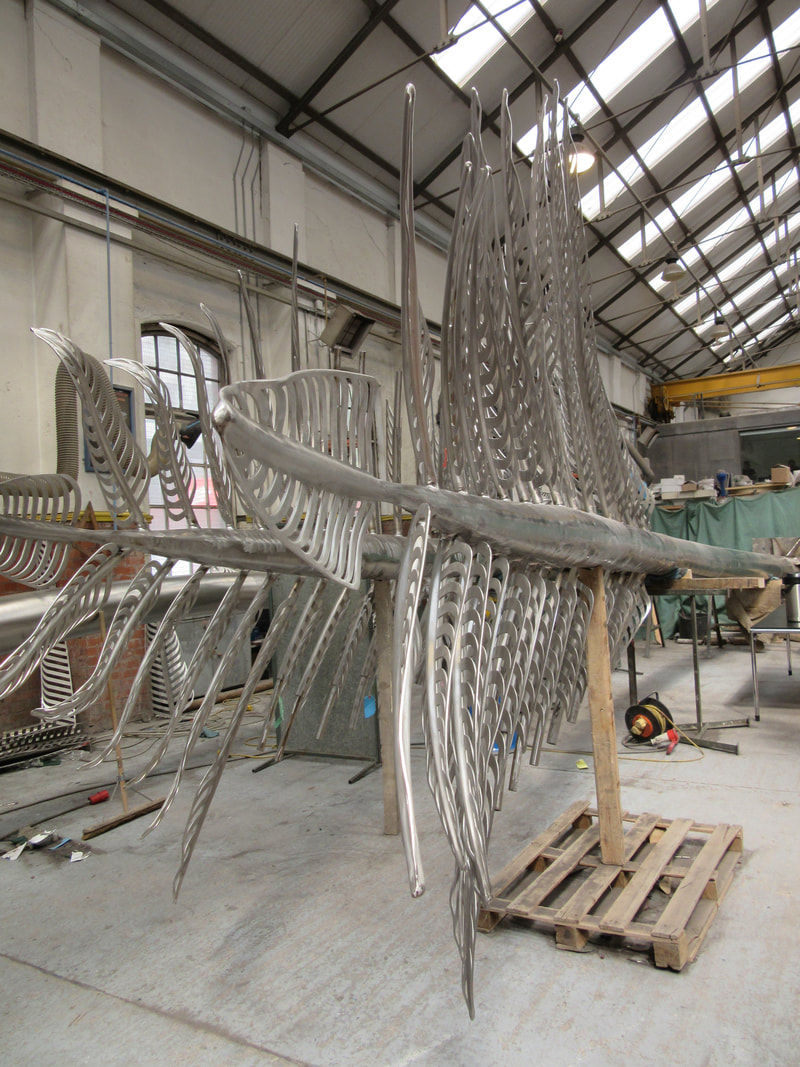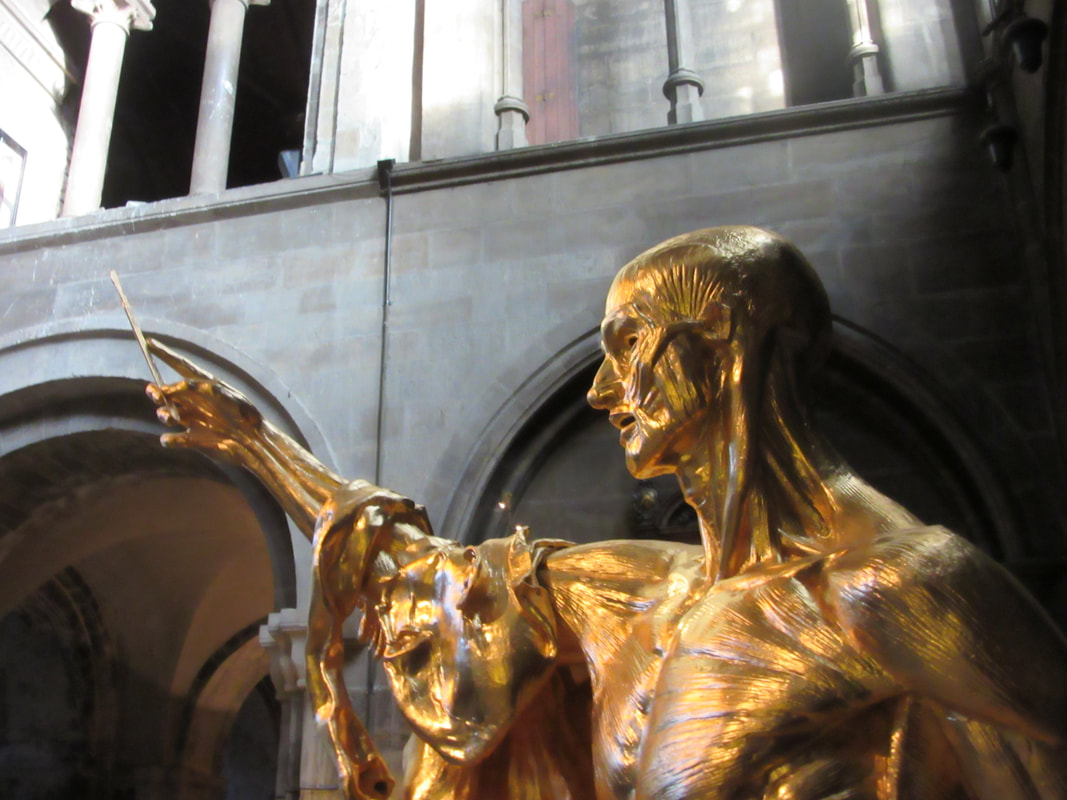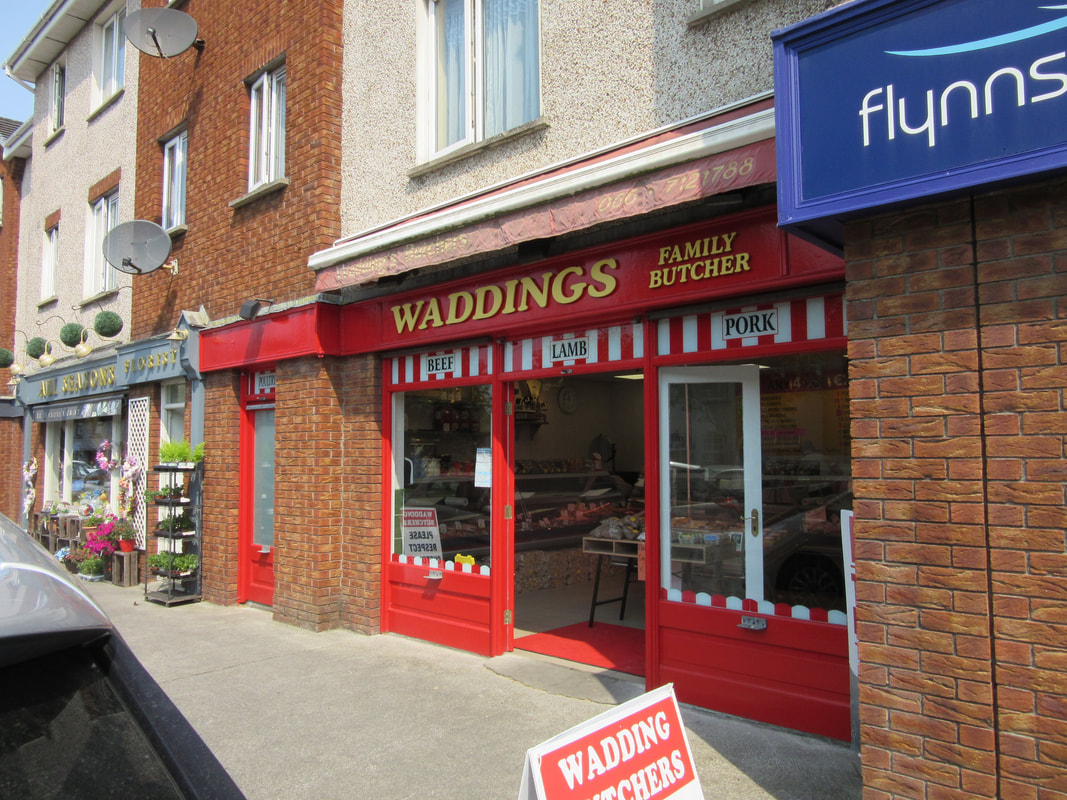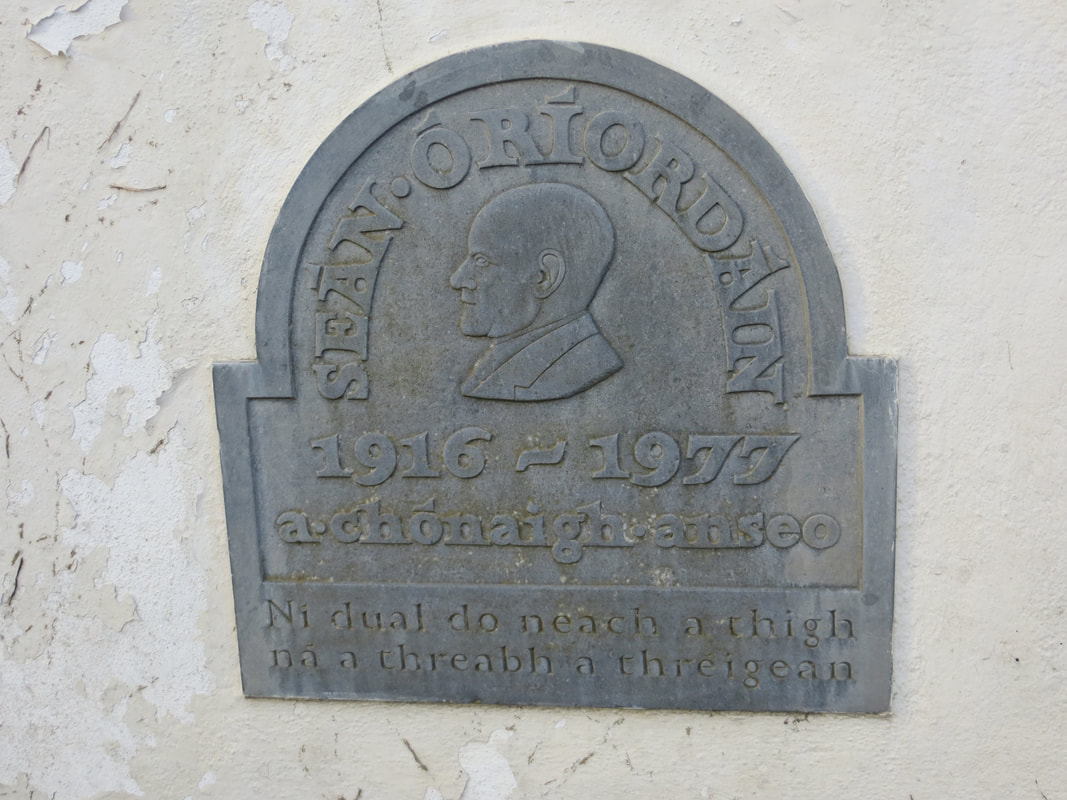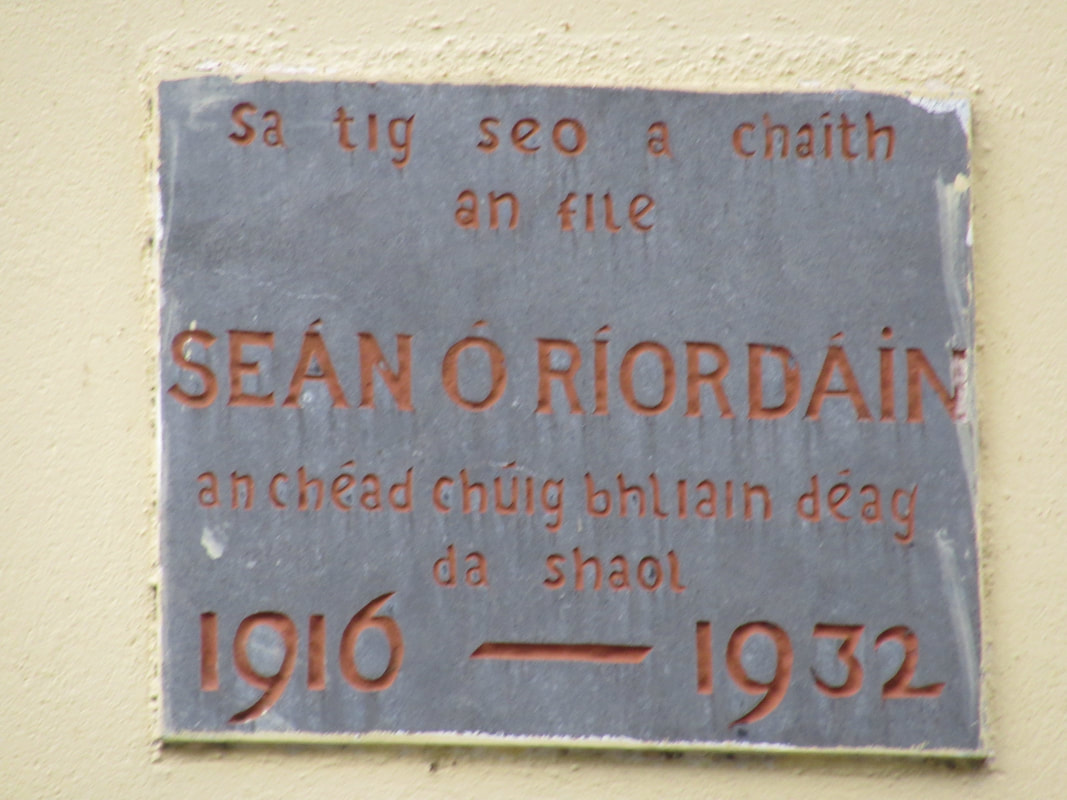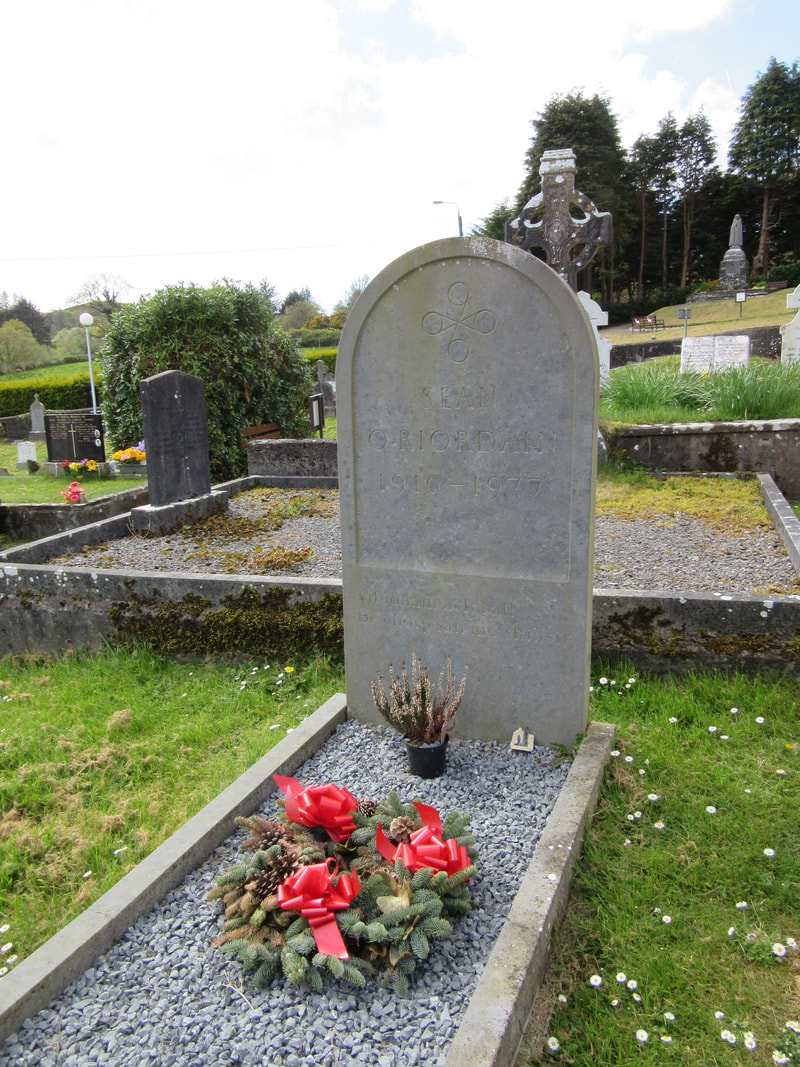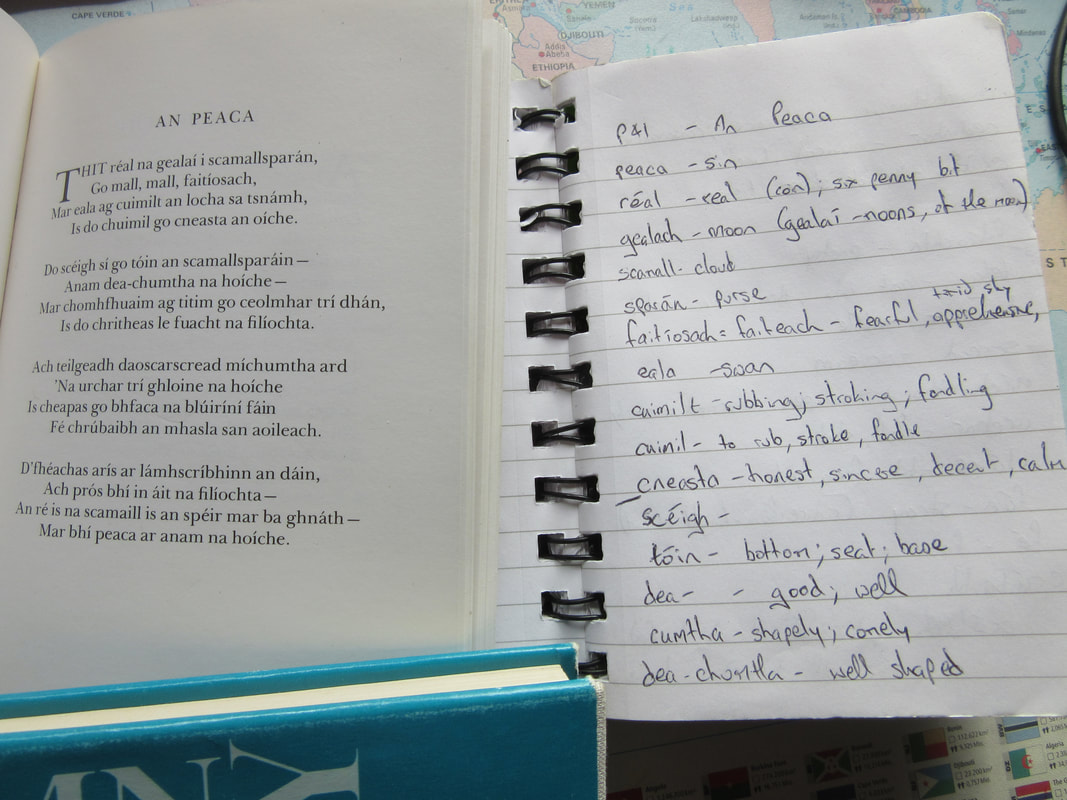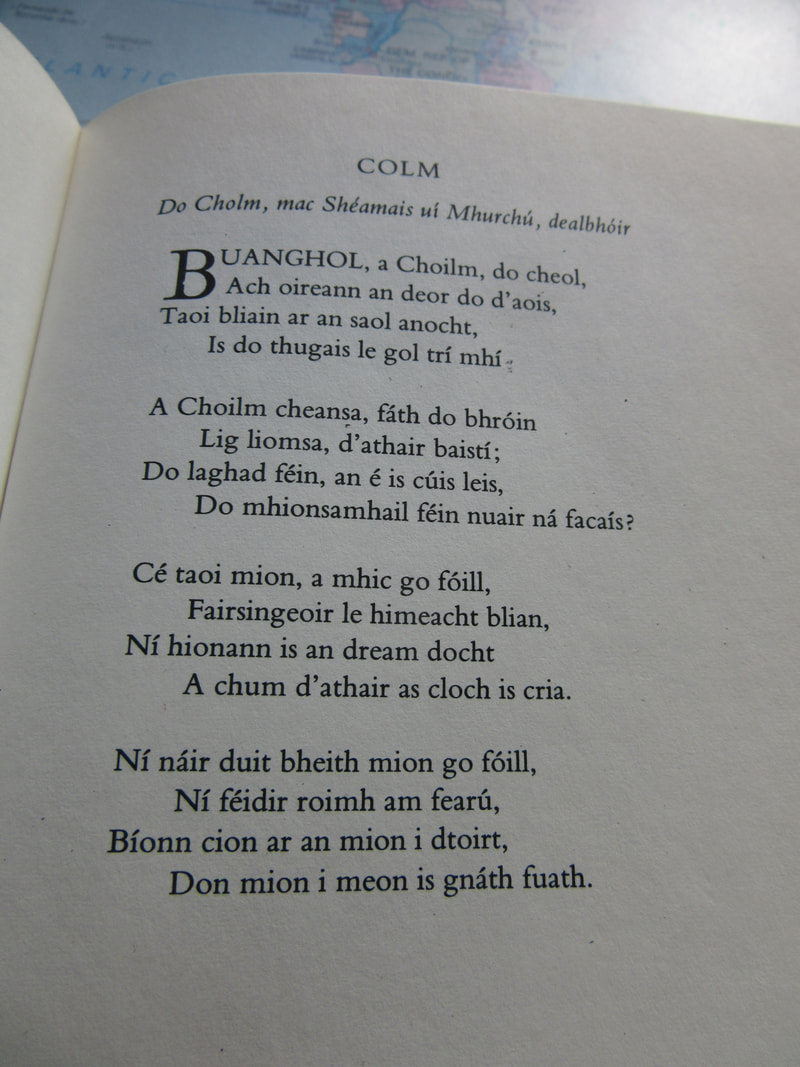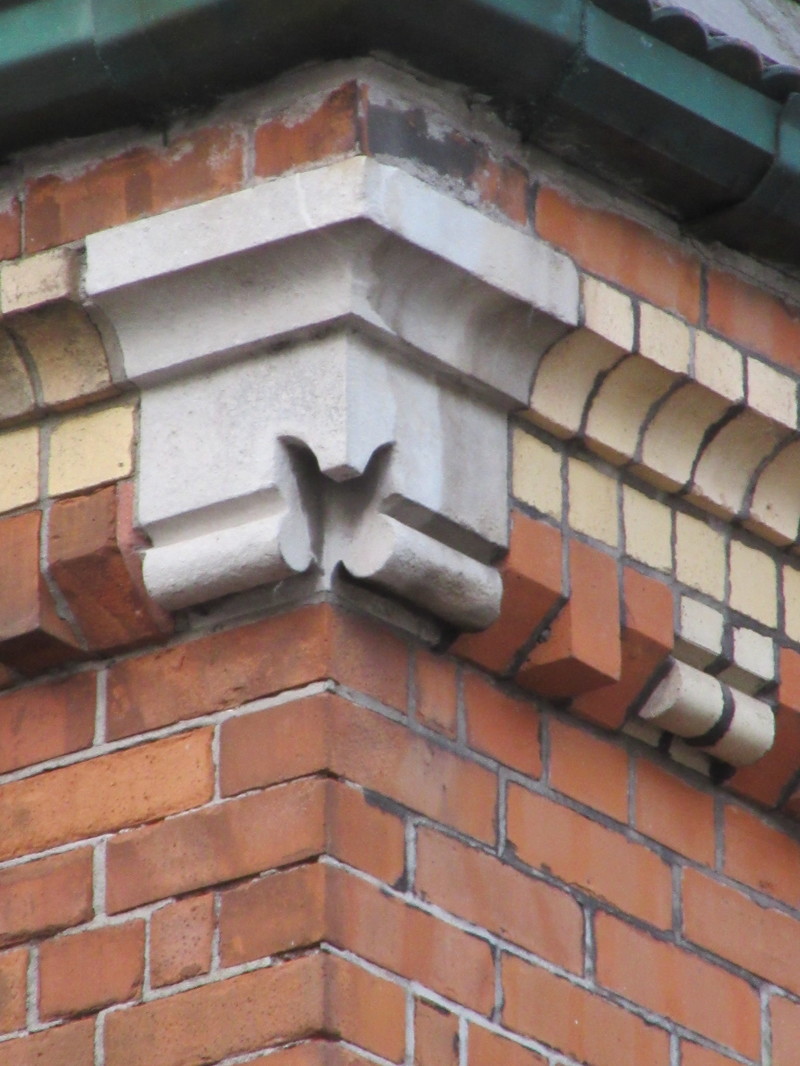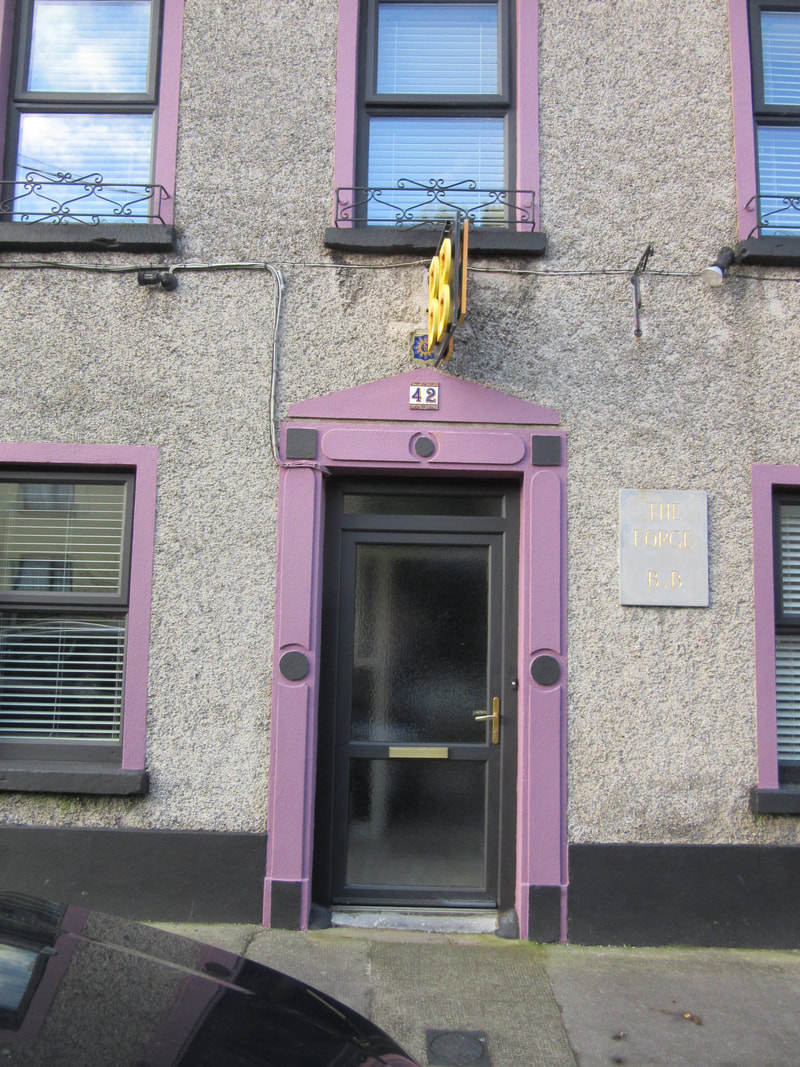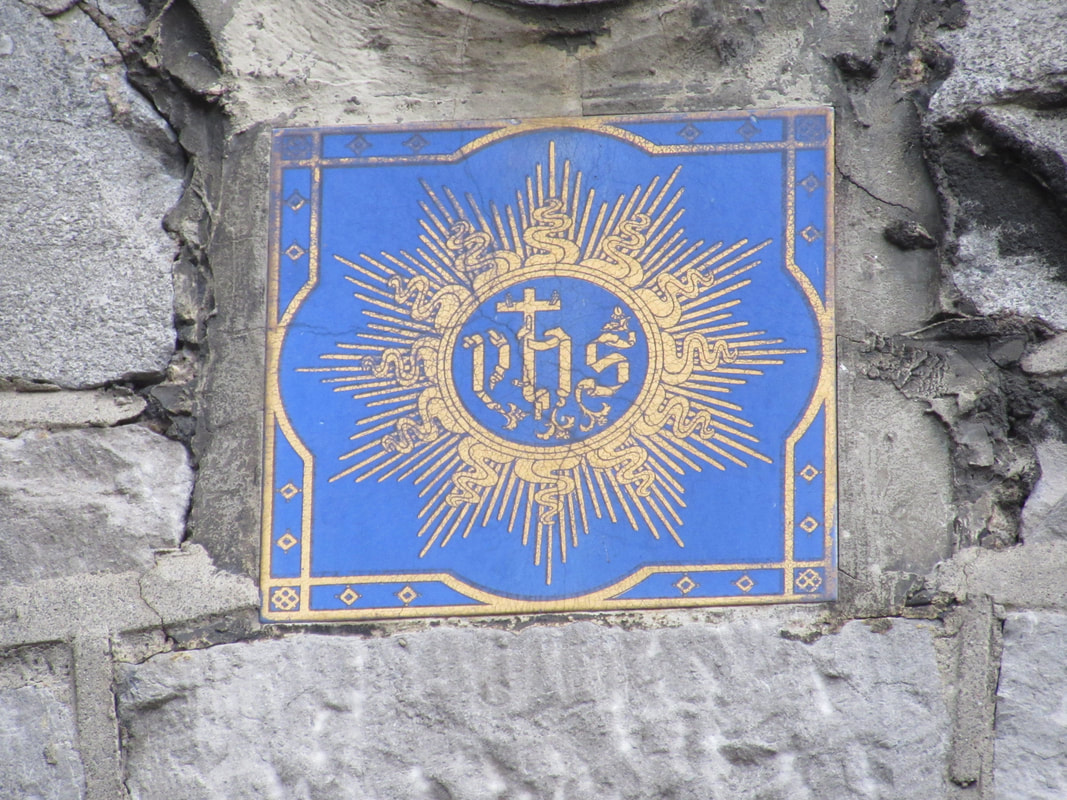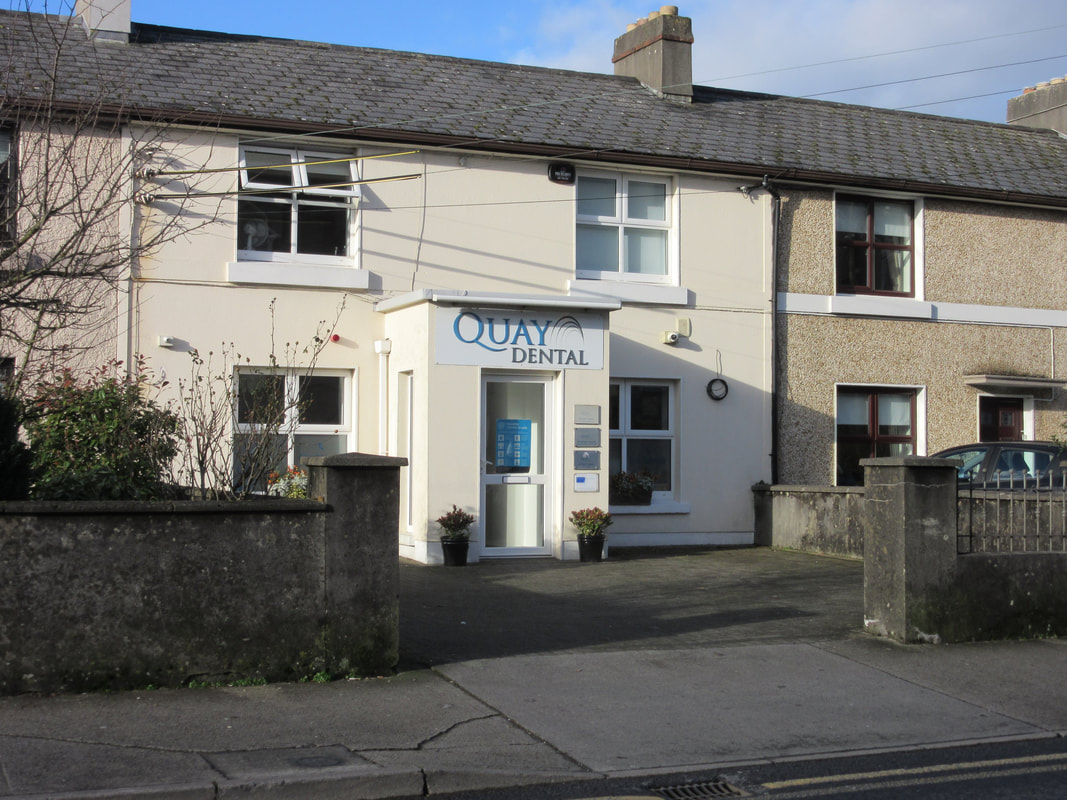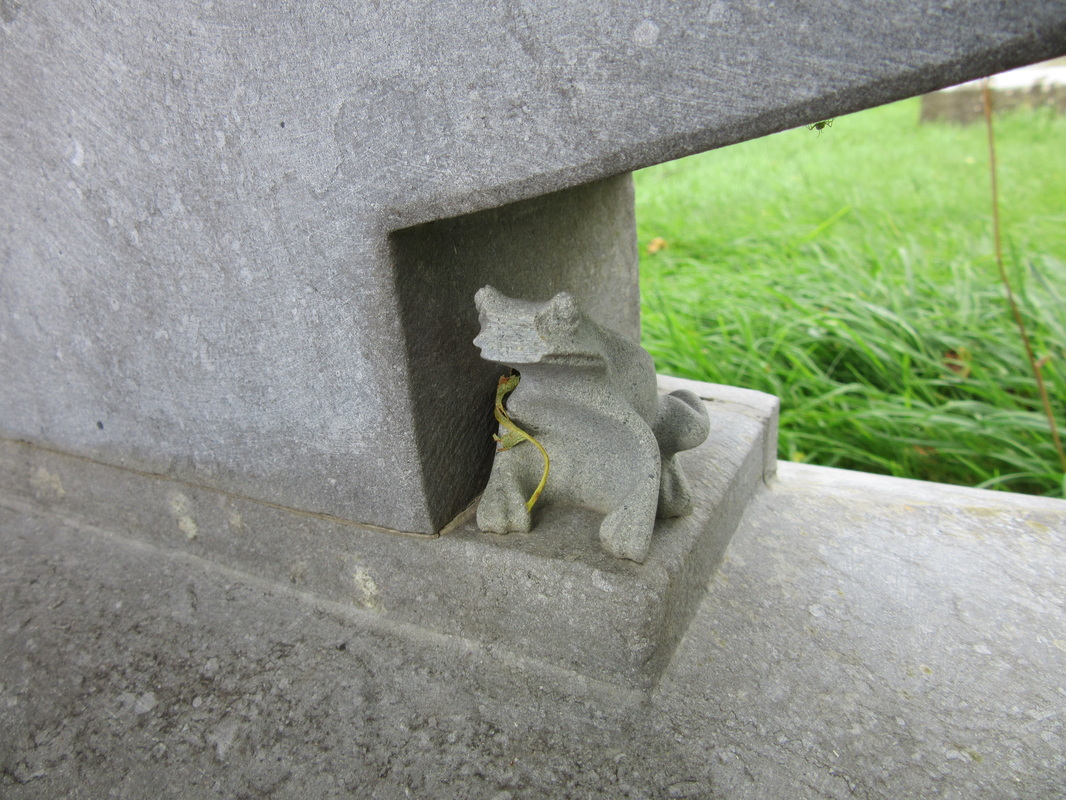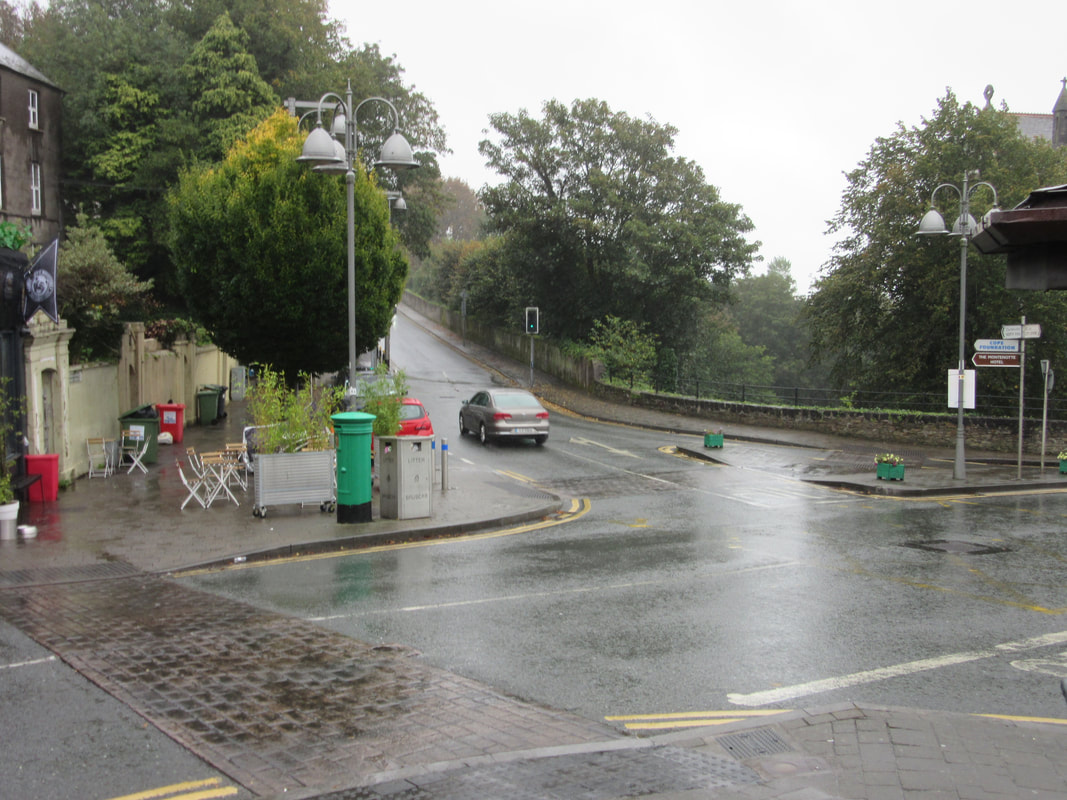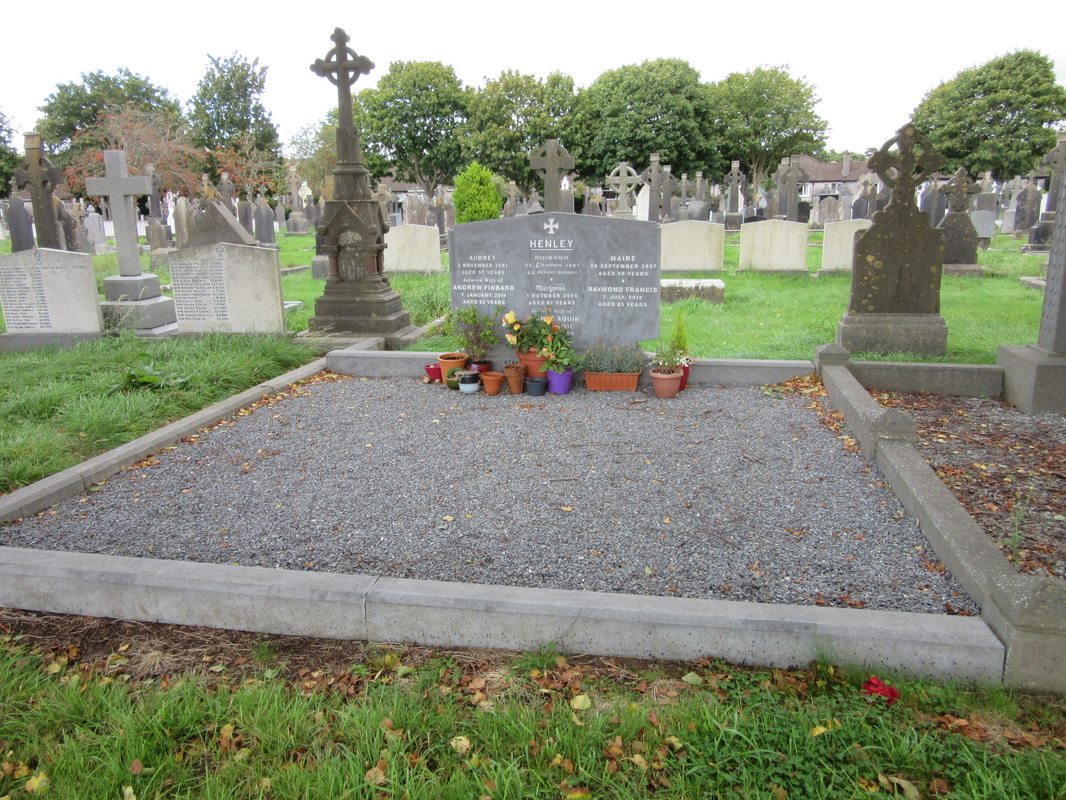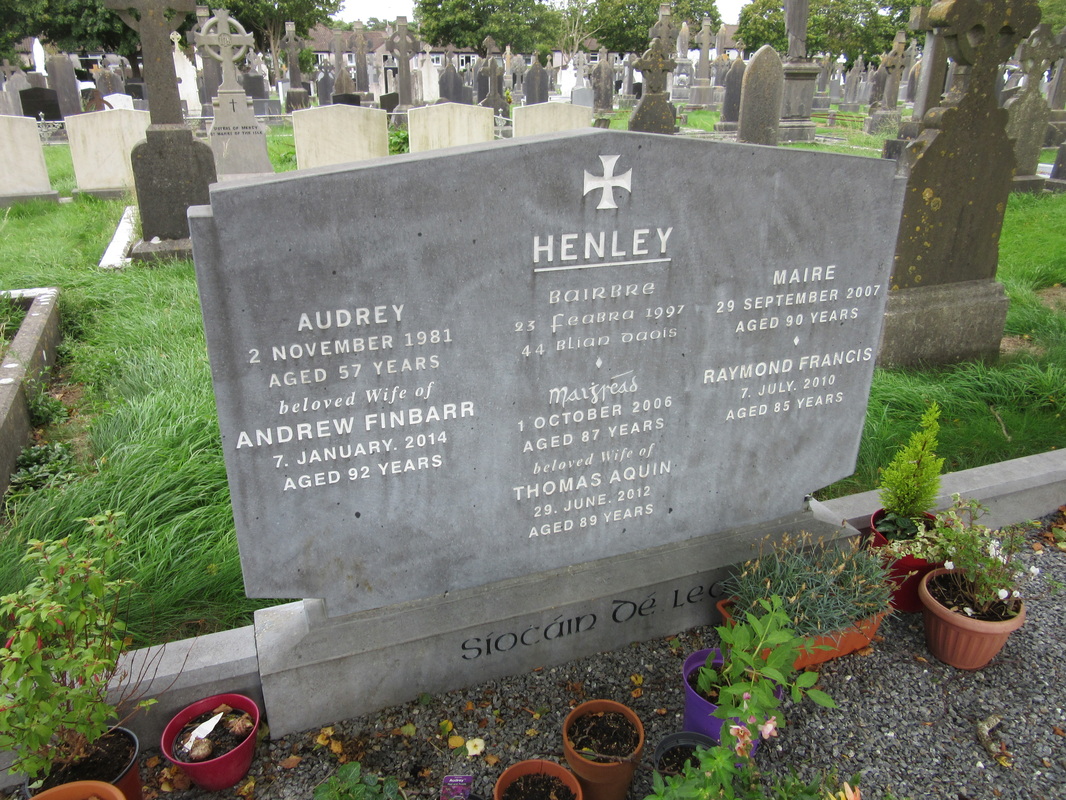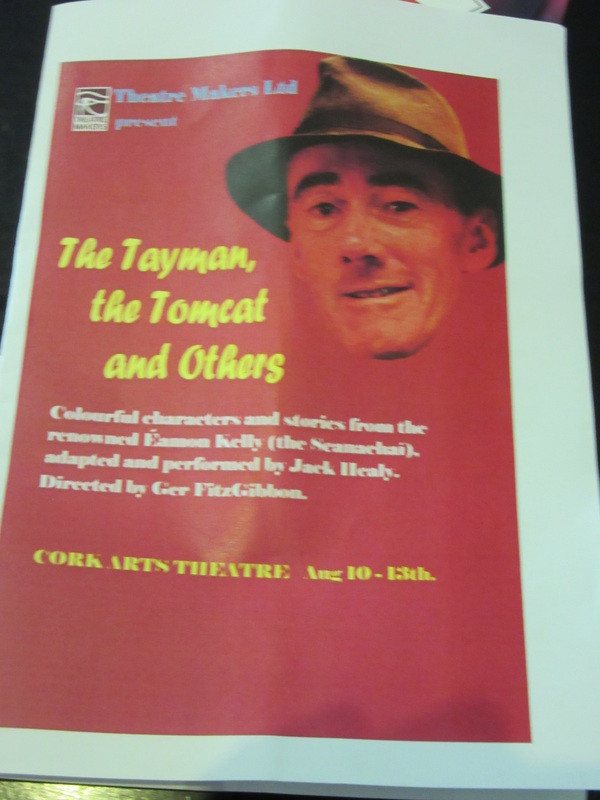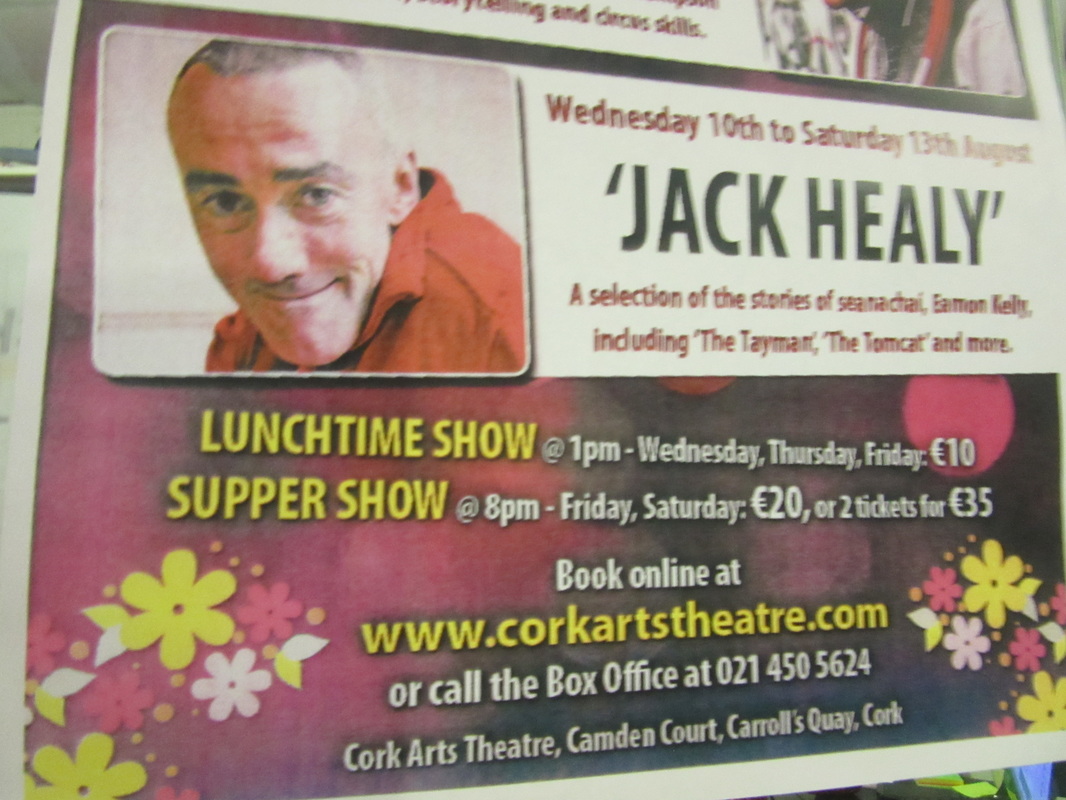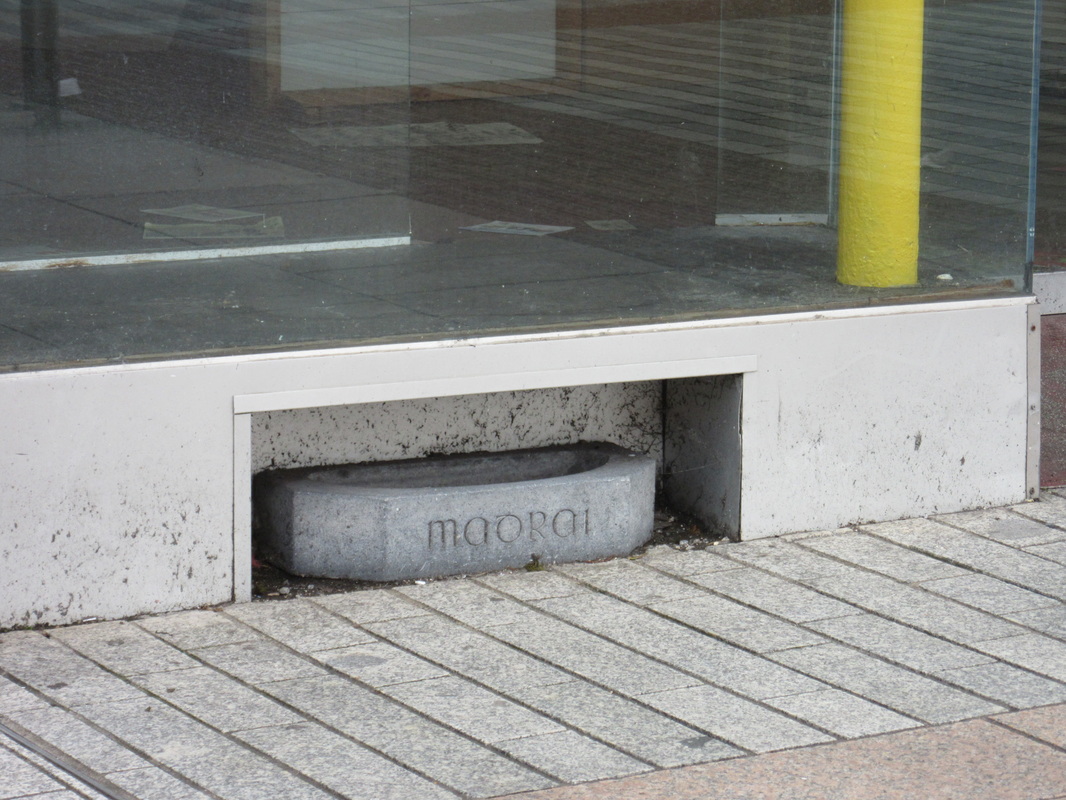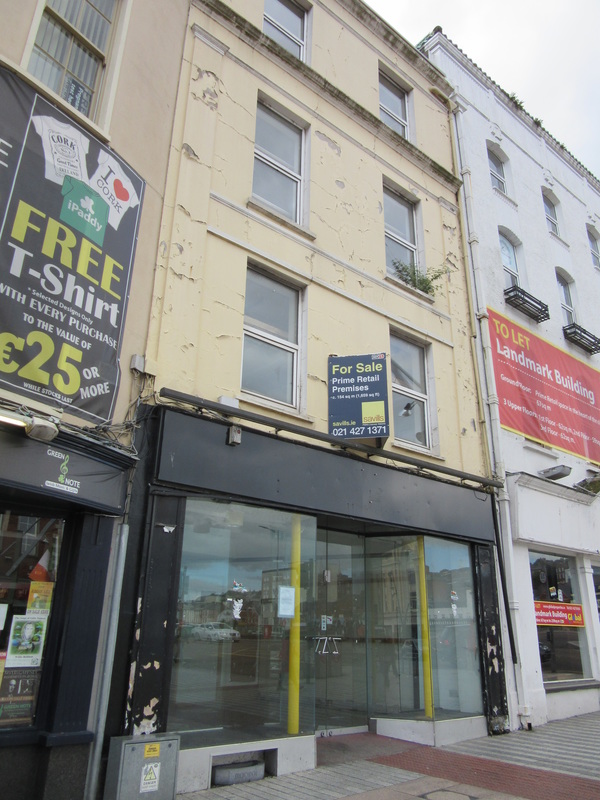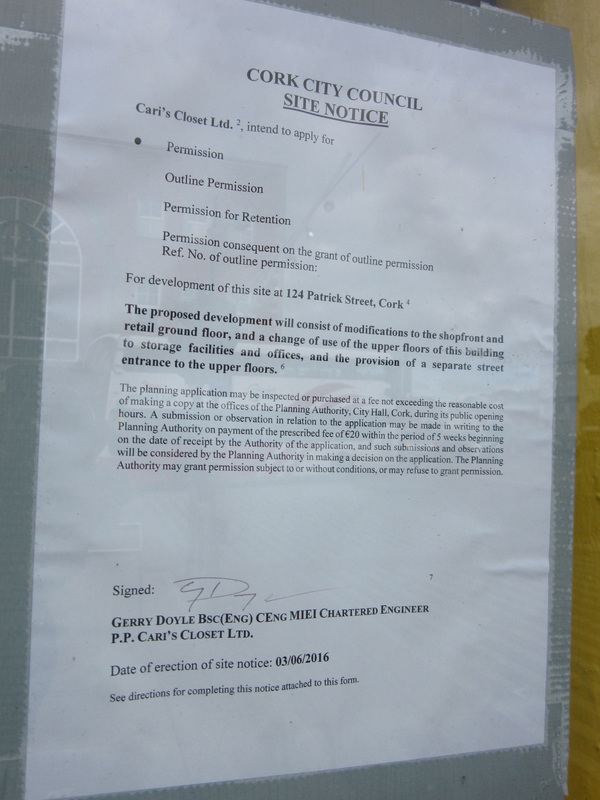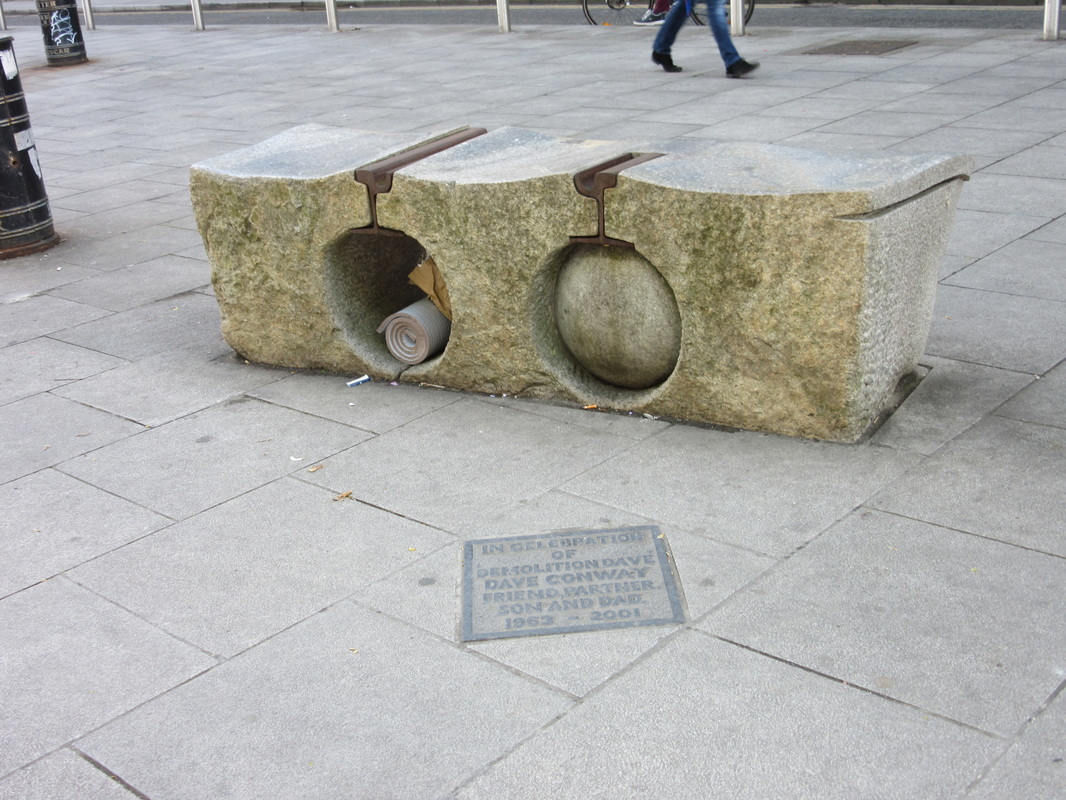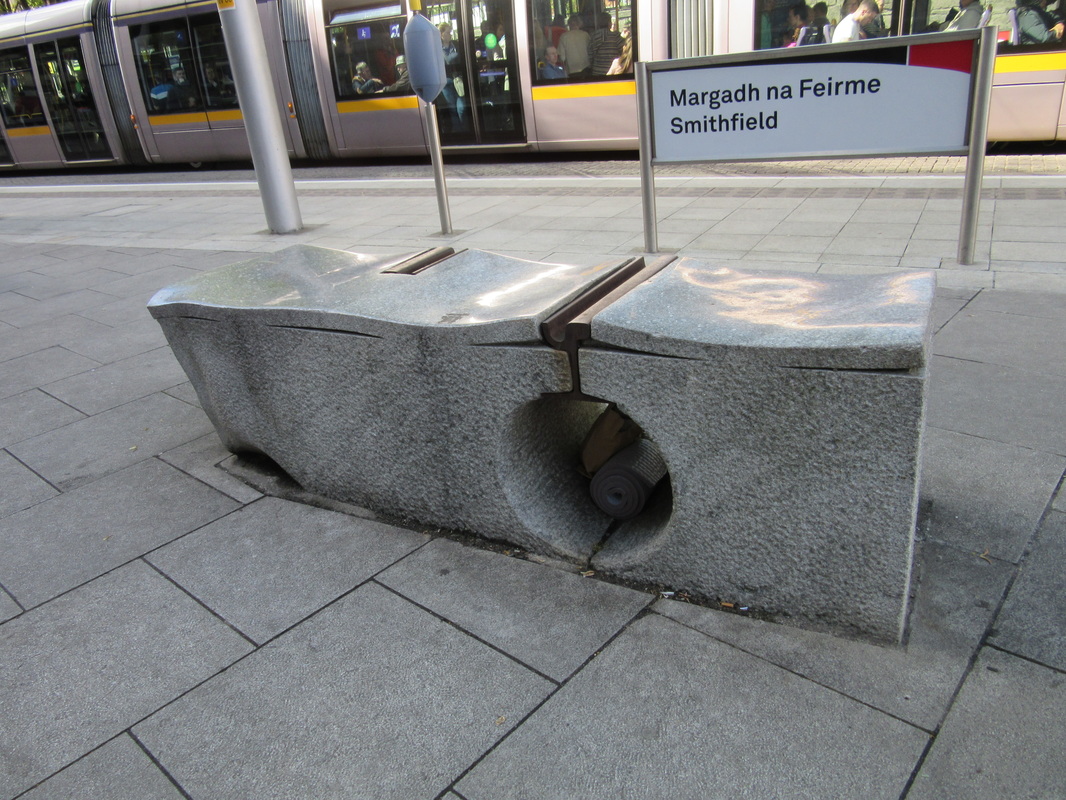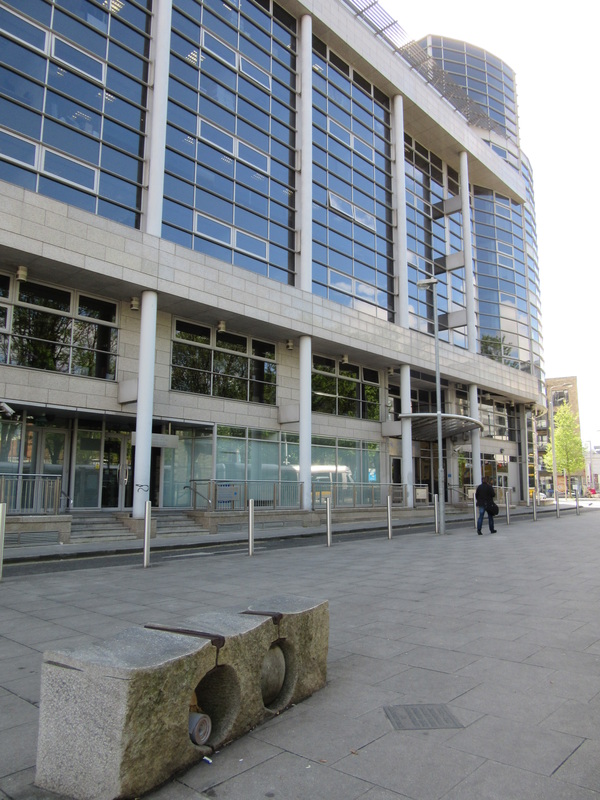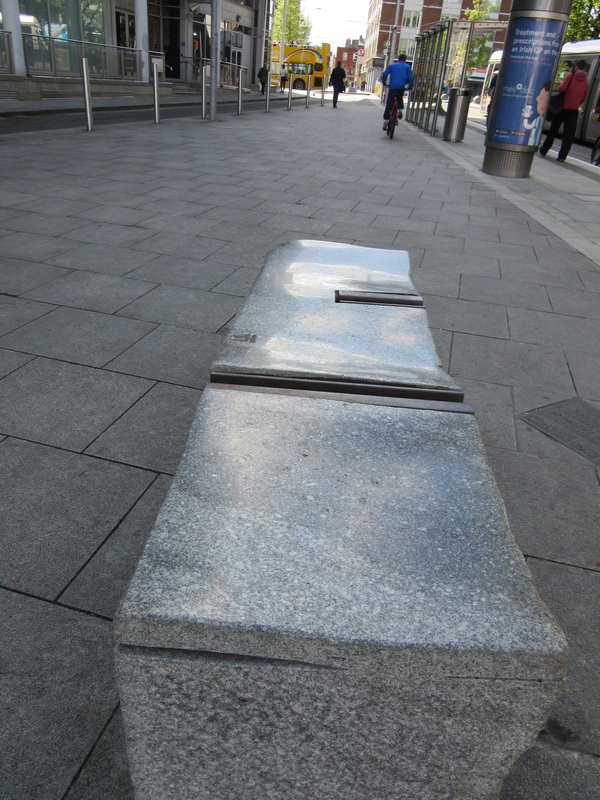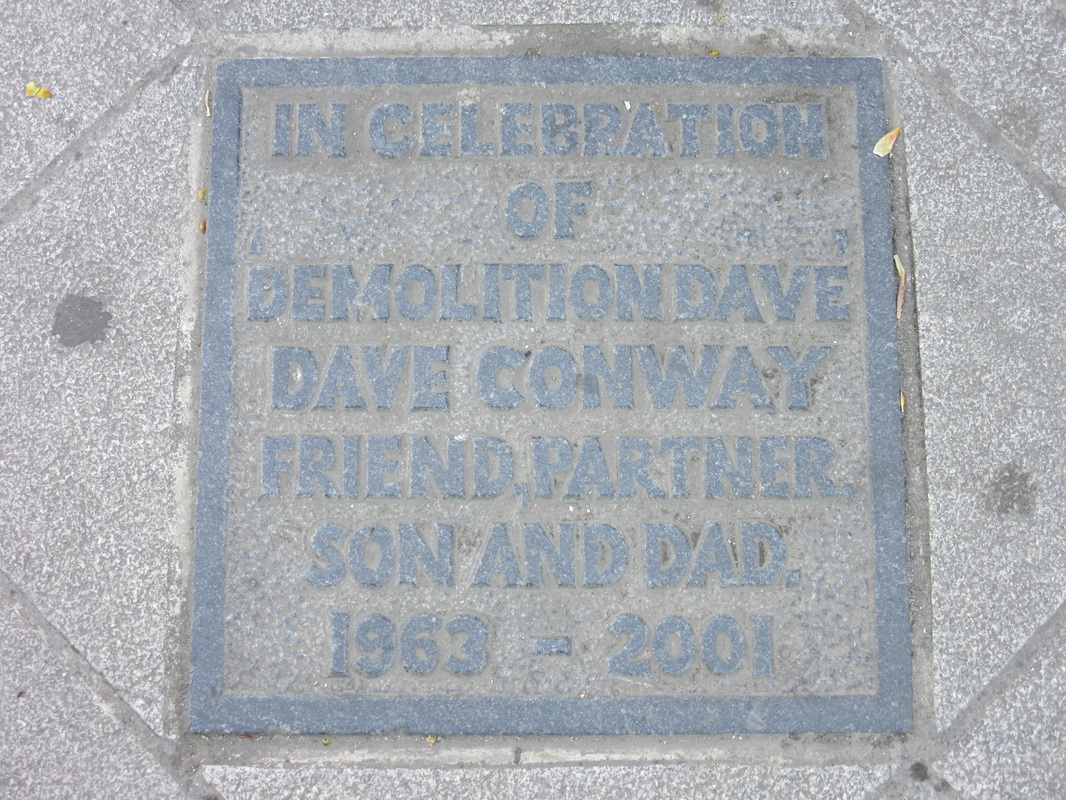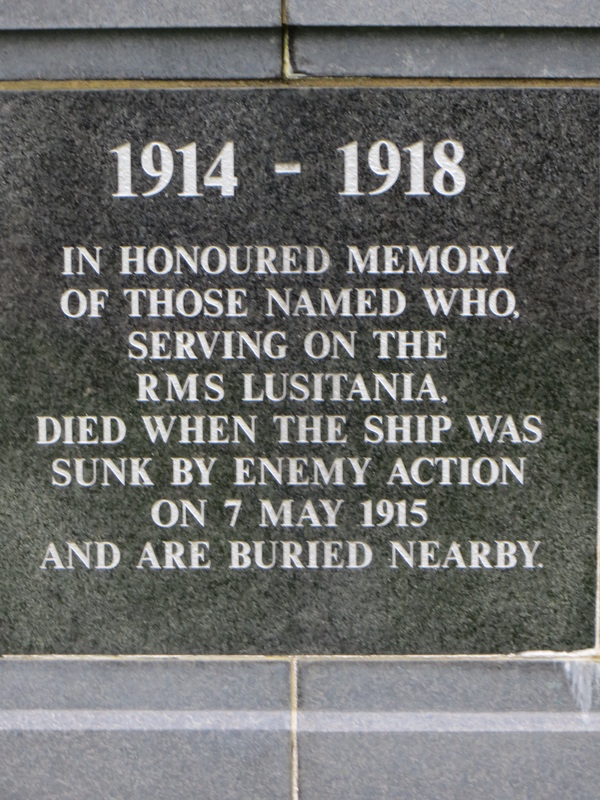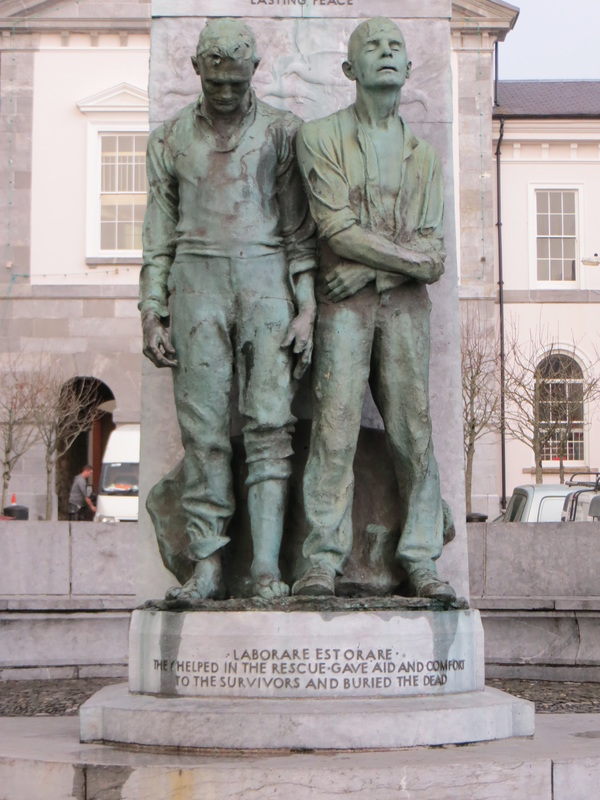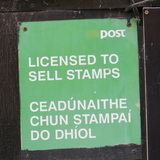| Seamus Murphy headstones are beautiful examples of stone carving, to these eyes at least. An encounter with an uncatalogued Seamus Murphy headstone is even more so. There is the anticipation as you spot the thickness and shape of the stone from a distance. The serrated grooves to the edge face and return raise expectation. Getting nearer, the lettering (particularly if red) will have you nearly convinced. After standing back to admire, then the search for the letter cutter’s signature is the confirmation that life is good. It is time to stand back, enjoy and appreciate – and then, just like those two early evening pints with a long lost friend who you just bumped into on the way home, leave happier and in a better space. I have seen a few headstones by Seamus Murphy not in the Crawford Art Gallery book of his work, so they do exist. It was just that last Sunday morning, taking some me time strolling around Douglas Cemetery, I was not expecting to see such a headstone. Just like pints – the unplanned meetings with headstones can be the best. |
|
1 Comment
A few weeks ago, I was driving through Baile Mhic Íre and spotted scaffolding and netting around the remains of a tree outside the school.
I have long been an admirer of chainsaw art on trees, so had to stop and record the work in progress. Looking forward to seeing the completed installation This piece of sculpture was in place for 10 years before I realised it existed – unfortunately the time I had to enjoy it was very limited. In May 2016, Micko told of his encounter walking the dog one evening. Coming up the quays by Penrose House, and approaching the bridge, he heard someone talking but there was no one nearby. Some investigation revealed that the four stainless steel structures were responsible for the sound of voices – only two of them actually.
Today I spotted a retweet from the Crawford Art Gallery that reminded me of the chat, my subsequent visits to the Listening Posts, and my promise to self to write a short blog on art installations not just being for the unveiling ceremony and plaque unveiling – some art needs some maintenance, a little love and affection. A few days after the chat with Micko, I went down to Penrose Quay. Two of the pieces were damaged and being used as litter receptacles. The other two were broadcasting lists relating to exports and passengers from the Port of Cork. I stopped and listened for a while – some nice chill out time. After this, I went a bit out of my way a few times to hear the messages – but then they were gone. Twitter threw up a beauty last Tuesday. I was reading down the twitter feed and spotted an open invitation by Alex Pentek to the National Sculpture Factory today to view his ferns which have been commissioned by Brisbane – my RSVP was nearly immediate. Even in the horizontal position their height is so impressive. The horizontal definitely allowed greater appreciation of the fronds and especially the curves in every direction. I thought they were brilliant. They were calling out to be touched I stood in admiration. In doing so, I overheard some conversations. One advised that the fronds on the taller straight pieces are in two parts to facilitate transportation, which seemingly happens next week, via Rotterdam and Singapore. There other brought to mind a similar situation in Cork, or so I thought. Seemingly, the original intended location in Brisbane could not be used as the concrete base for the ferns could not be provided due to the extent of underground utility services. This immediately brought from the recesses of my mind a similar story – that of Christ the King church in Turner’s Cross, designed by Barry Byrne. I spend a while this afternoon checking the internet and reading through some of my books on Cork to try and find where I had learned/dreamt that Barry Byrne had understood that the site was at a t-junction and so the church would be much more prominent as one approached the intersection – but to no avail. Brisbane and Turner’s Cross may well be connected by Urban Myth. Today’s listing from Stair na hÉireann advised that on this day in 1916, Séan Ó Ríordáin was born.
This prompted a reminder to self to finish the grouping of the very many photographs and start uploading here. I have spent a while this afternoon putting together the different aspects relating to Seán Ó Ríordáin that I have encountered in the past few years – as well as a bit of a distraction on YouTube. SEE ALL HERE I went to secondary school in this building for six years.
As well as going to and from school, I would have passed the building regularly going into town as it was one of the available routes. For the past nine years, I have passed nearly every day – at least once a day. Yet it was only last November that I spotted this lovely detail. It appears to be quite simple. Most things are when you know what you are doing. A symmetrical cut at the external corner of a stone provides a revelation – a lovely butterfly, even if it took me forty years to spot it.
This morning’s update from Stair na hÉireann advised that on this day in 1975, Seamus Murphy died.
His work has prompted quite a number of blogs here before. I have yet to upload and create a separate section of the work that I have photographed on my travels. For now and for today, a slideshow of a selection of his work. The frog was keeping an eye on me. I almost missed him completely. The Henley family headstone is in St. Finbarr’s Cemetery. I liked the shape and detail and was taking some photographs. Only then did I spot the frog.
I think that this is a great detail. Not only will I now remember the Henley family, but I will remember with a smile. Respect too to Wallis Monumental Sculptors in Midleton.
To Find Out More List The three books have provided little bits of knowledge about so many things that I need to find out more (ever connecting). I have enjoyed a pint in The Blue Bull in Sneem. It was Éamon Kelly who educated that The Blue Bull was a Synge Play. I will need to return to Gneeveguilla to photograph the plaque to Mick Sullivan who was shot by Black & Tans while Éamon Kelly was in the adjacent school – the list of Civil War and War of Independence memorials ever growing. There are many traditions that intrigued, sounded lovely or just demanded further exploring – families joined in butter; overnight fasting prior to receiving Holy Communion; family owning a church pew so those standing at back did not have funds to purchase and pay rent on pew; stopping the clock upon a death, as seen in Jean deFlorette; and the giving of a disease to another similar to leaving cloth on a rag tree at a Holy Well. It also introduced words to me, many appear derived for Irish. These will keep me going for some time. The list is below but any education as to ‘gripe’; ‘hoult’; ‘fakah’;or, ‘roiseters’ would be welcome. A Visit To The TheatreThis week I spotted that Jack Healy had a play based upon the stories of Éamon Kelly at The Cork Arts Theatre on Camden Quay.
Yesterday lunchtime was a magnificent hour spent listening, smiling, laughing and remembering. More than halfway through the show, I was reminded as to one of my flysheet notes in The Journeyman. There had been quite a few different stories. Éamon Kelly in The Journeyman was writing of ‘In My Father’s Time’ – ‘We found that a number of stories told one after the other could sound episodic. There had to be a changing relationship between the pieces, and the links had to be carefully thought out to make seamless the fabric, which we hoped would be colourful and entertaining’. My flysheet note was that the book, unlike The Apprentice which I found much more interesting, was failing to flow. Fair play to Jack Healy. With the benefit of reflection on my hour or so in the auditorium, the different aspects and stories flowed; and, the knitting of the stories was brilliant and of a manner that brought the occasion up to date. I had heard or read of a few of the stories but the delivery, verbally and with actions, made them a new experience – I laughed even when I knew the punchline. It is in the Cork Arts Theatre only until tomorrow night but is intended to travel later in the year. I do recommend.
I have long liked the idea of incorporating salvage material into new work.
Building materials from times past regularly were strong enough to last many lifetimes and had individual details that we do not get with current standardisation. I have managed to source one of the hoopers than I sought but I passed on the spiral stairs. The telephone box as a feature in the garden remains a dream. A few weeks back, with the train departure a while away, I walked to Hueston and was very happy to spot this commemorative piece to Dave Conway. Trying to find out about it did involve a few internet dead ends before I learned that Dave Conway was Demolition Manager involved in the LUAS project and the Railway Procurement Agency commissioned James Gannon to create a sculpted piece at Smithfield. Does it not scream out to be caressed? Or is that just my sense of admiration? “Every Man’s Work Shall Be Made Manifest. For The Day Shall Declare It.” This morning, I was reminded of this anniversary by Stair na hÉireann, Irish History Links and Don MacRaild .
An interesting tweet this morning included a photograph of notice offering a reward for discovery of a body of a Lusitania passenger, Robert Preston Prichard. A few weeks back, I blogged about the statue of Robert Emmet in St. Stephen’s Green. This was made by Jerome Connor who also made the Lusitania Memorial in Cobh. This week, we were well impressed with the exhibition about the Lusitania at the Liverpool Maritime Museum. As well as a poster from the White Star Line agent in Caherciveen – John Dennehy, the Museum had a map showing the addresses of those travelling on the Lusitania. William Lawrence was originally from Wales but his then address was Whitegate, Co. Cork – the only Cork address and one of only six from Ireland, Hugh Lane was not among them. All of these connecting dots were prompt enough for me to put together the photographs from different places linking the Lusitania. A few years ago this would just have been another statue on display in St. Stephen’s Green.
Having learnt from signs about the sculptor Jerome Connor from Annascaul, Co. Kerry and a small bit about Robert Emmet, I did appreciate the sculpture a small bit more. It was made 100 years ago – obviously the Easter Rising was not the only thing that happened that year. The few minutes in St Stephen’s Green yesterday looking and touching did allow the centenary overload to be forgotten for just a while. |
AuthorFrom Cork. SUBSCRIBE
Unless otherwise specifically stated, all photographs and text are the property of www.readingthesigns.weebly.com - such work is licenced under a Creative Commons Attribution - ShareAlike 4.0 International Licence
Archives
May 2024
Categories
All
Blogs I Read & LinksThought & Comment
Head Rambles For the Fainthearted Bock The Robber Póló Rogha Gabriel Patrick Comerford Sentence First Felicity Hayes-McCoy 140 characters is usually enough Johnny Fallon Sunny Spells That’s How The Light Gets In See That Tea and a Peach Buildings & Things Past Built Dublin Come Here To Me Holy Well vox hiberionacum Pilgrimage in Medieval Ireland Liminal Entwinings 53degrees Ciara Meehan The Irish Aesthete Líníocht Ireland in History Day By Day Archiseek Buildings of Ireland Irish War Memorials ReYndr Abandoned Ireland The Standing Stone Time Travel Ireland Stair na hÉireann Myles Dungan Archaeouplands Wide & Convenient Streets The Irish Story Enda O’Flaherty Cork Archive Magazine Our City, Our Town West Cork History Cork’s War of Independence Cork Historical Records Rebel Cork’s Fighting Story 40 Shades of Life in Cork Roaringwater Journal |
